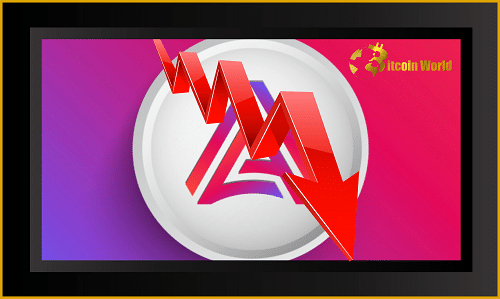Ever imagined a digital printing press gone rogue, churning out billions of dollars out of thin air? That’s almost what happened with Acala Dollar (aUSD), the stablecoin built on the Polkadot network. Over a recent weekend, a configuration hiccup allowed hackers to mint a staggering 1.3 billion aUSD, sending the stablecoin on a rollercoaster ride. Let’s dive into what happened and what it means for the world of crypto.
The Great aUSD Glitch: What Went Down?
Think of Acala as a bustling DeFi hub within the Polkadot ecosystem. Its stablecoin, aUSD, was designed to maintain a steady value, pegged to the US dollar. However, on a fateful Sunday, things went awry. A vulnerability in the Honzon protocol, which governs aUSD, was exploited, leading to the unauthorized creation of a massive amount of tokens. Imagine waking up to find your local currency multiplied by a thousand – that’s the scale of the problem Acala faced.
To put it in perspective:
- The Problem: A configuration issue in the Honzon protocol.
- The Consequence: Hackers generated 1.3 billion aUSD without proper backing.
- The Immediate Impact: aUSD’s price plummeted to as low as $0.07 on some exchanges.
The Swift Response: Halting Operations and Identifying the Culprits
The Acala team acted swiftly, hitting the pause button on their network operations to contain the damage. It’s like hitting the emergency stop on a runaway train. They quickly identified the issue and pinpointed the wallet addresses involved in the exploit. Imagine the digital detectives working tirelessly to trace the flow of these newly minted tokens!
Acala’s immediate actions included:
- Halting Operations: Temporarily stopping the network to prevent further exploitation.
- Identifying Affected Wallets: Pinpointing the addresses holding the illicitly created aUSD.
- Fixing the Configuration Error: Addressing the vulnerability in the Honzon protocol.
The Price Plunge and the Rebound: A Crypto Market Rollercoaster
The impact on aUSD’s price was dramatic. Having maintained its dollar peg since its launch in February, it experienced a sharp decline, mirroring the struggles of TerraUSD (UST) earlier in the year. This sent ripples through the crypto community, highlighting the inherent risks associated with even the most promising projects. However, in a testament to the resilience of the system and the swift action of the Acala team, aUSD quickly recovered, trading above $0.90 shortly after the incident. It’s a powerful reminder of the volatility and the potential for rapid recovery in the crypto space.
Let’s look at the price action:
| Stage | aUSD Price |
|---|---|
| Before Incident | ~$1.00 |
| During the Crash | As low as $0.07 |
| Post-Recovery | >$0.90 |
How Does aUSD Work Anyway? Understanding the Mechanics
So, how does a stablecoin like aUSD maintain its peg? Unlike centralized stablecoins backed by fiat currency in a bank, aUSD relies on a pool of reserve assets within the Polkadot ecosystem. Users can mint aUSD by depositing certain cryptocurrencies into the Honzon protocol. Think of it as a digital vault where collateral is locked to issue stablecoins. This decentralized approach aims to provide stability without relying on traditional financial institutions.
Key aspects of aUSD’s mechanism include:
- Honzon Protocol: The underlying protocol managing the issuance and stability of aUSD.
- Reserve Assets: A pool of cryptocurrencies within the Polkadot ecosystem backing aUSD.
- Decentralized Minting: Users can create aUSD by providing collateral.
What Happens to the Extra Tokens? The Power of Governance
This is where the decentralized nature of Polkadot comes into play. The decision on what to do with the remaining illegally minted aUSD rests with the community through a governance vote. It’s like a digital town hall where token holders get to decide the fate of the extra tokens. The network has locked the remaining illicit aUSD pending this decision, showcasing the power of community-driven governance in the blockchain space.
Key Takeaways and Lessons Learned
The Acala Dollar incident serves as a crucial reminder of the complexities and potential vulnerabilities within the rapidly evolving DeFi landscape. While the swift response and recovery are encouraging, it highlights the importance of robust security measures and community governance in maintaining the integrity of decentralized financial systems.
Here are some key takeaways:
- Security is paramount: Even well-established protocols can have vulnerabilities.
- Swift action is crucial: Acala’s quick response helped mitigate the damage.
- Community governance matters: The decision-making process for the excess tokens highlights the power of decentralized governance.
- Stablecoins are not risk-free: Incidents like this underscore the risks associated with even pegged assets.
Looking Ahead: The Future of aUSD and Polkadot
While this incident was a significant challenge for Acala, the quick recovery and the community’s response demonstrate the resilience of the Polkadot ecosystem. The focus now shifts to strengthening security measures and ensuring the long-term stability of aUSD. This event will undoubtedly lead to more rigorous testing and auditing of DeFi protocols, ultimately contributing to a more secure and robust crypto environment.
The Acala Dollar incident was a stark reminder of the ever-present risks in the crypto world. However, it also showcased the speed at which these networks can react and the power of community governance. As the crypto space continues to mature, expect more robust security measures and a greater emphasis on community-driven solutions to navigate these challenges.
Disclaimer: The information provided is not trading advice, Bitcoinworld.co.in holds no liability for any investments made based on the information provided on this page. We strongly recommend independent research and/or consultation with a qualified professional before making any investment decisions.


